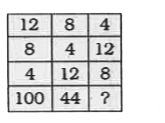Type specimen selected from the original material in case the holotype is missing, is called :-
Lectotype
Neotype
Syntype
Paratype
The correct Answer is:A
To answer the question, "Type specimen selected from the original material in case the holotype is missing, is called:", we can follow these steps:
1. Understand the Concept of Type Specimens:
- Type specimens are crucial in taxonomy as they serve as a reference for the identification of species. The holotype is the single specimen designated as the representative of a species.
2. Identify the Role of Holotype:
- A holotype is a specific specimen that is used to describe a species. It is the primary reference point for that species.
3. Recognize the Issue of Missing Holotype:
- In some cases, the holotype may be lost or unavailable. This presents a challenge in taxonomy as the reference for the species is no longer accessible.
4. Define Lactotype:
- When the holotype is missing, a lactotype is selected from the original material. A lactotype serves as a substitute to represent the species in the absence of the holotype.
5. Differentiate Between Lactotype and Other Types:
- It is important to note that there are other types of specimens, such as syntypes (more than one specimen designated when no holotype is available) and neotypes (a new type specimen designated when all original types are lost).
6. Conclude with the Correct Answer:
- Based on the definitions and understanding, the type specimen selected from the original material when the holotype is missing is called a Lactotype.
Final Answer:
The type specimen selected from the original material in case the holotype is missing is called a Lactotype.
---
- Type specimens are crucial in taxonomy as they serve as a reference for the identification of species. The holotype is the single specimen designated as the representative of a species.
- A holotype is a specific specimen that is used to describe a species. It is the primary reference point for that species.
- In some cases, the holotype may be lost or unavailable. This presents a challenge in taxonomy as the reference for the species is no longer accessible.
- When the holotype is missing, a lactotype is selected from the original material. A lactotype serves as a substitute to represent the species in the absence of the holotype.
- It is important to note that there are other types of specimens, such as syntypes (more than one specimen designated when no holotype is available) and neotypes (a new type specimen designated when all original types are lost).
- Based on the definitions and understanding, the type specimen selected from the original material when the holotype is missing is called a Lactotype.
The type specimen selected from the original material in case the holotype is missing is called a Lactotype.
Topper's Solved these Questions
- DIVERSITY IN THE LIVING WORLDBOOK - MOTIONCHAPTER - DIVERSITY IN THE LIVING WORLDEXERCISE - Exercise - 1 (HISTORY OF TAXONOMY)
59 Videos
- DIVERSITY IN THE LIVING WORLDBOOK - MOTIONCHAPTER - DIVERSITY IN THE LIVING WORLDEXERCISE - Exercise - 1 (KINGDOM – MONERA)
143 Videos
- DIGESTION AND ABSORPTIONBOOK - MOTIONCHAPTER - DIGESTION AND ABSORPTIONEXERCISE - EXERCISE -4 AIIMS | Assertion & Reason Questions
23 Videos
- ECOLOGYBOOK - MOTIONCHAPTER - ECOLOGYEXERCISE - EXERCISE -4
56 Videos
Similar Questions
A 'type' is one particular specimen (or a group of specimens) of an organism to which the scientific name of that organism is formally attached. Match colum I (type) with colum II (description) and select the correct option from the codes given below.
Colum IColumn IIA.Holotype(i)A specimen cited with original description other than the holotype or isotypeB.Isotype(ii)A duplicate of the holotypeC.Paratype(iii)A specimen designated in the original designated in the original descriptionD.Lectotype(iv)A specimen selected from original material to serve as nomenclatural type when the holotype was not designated
View SolutionSelect the missing number from the given matrix :

View Solution
Knowledge Check
Type specimen described along with holotype is
AlsotypeBParatypeCTopotypeDSyntypeWhen the holotype is not mentioned in the original material, which is used as type specimen
AParatypeBLectotypeCNeotypeDSyntypeThe specimen selected to serve as holotype when the holotype, lectotype or neotypes are ambiguous
AneotypeBepitypeCparatypeDsyntype
Select the missing number from the given alternatives :

View SolutionSelect the missing number from the given alternatives

View SolutionSelect the missing number from the given alternatives

View SolutionSelect the missing number from the given alternatives :

View SolutionSelect the missing number from the given alternatives :

View Solution
